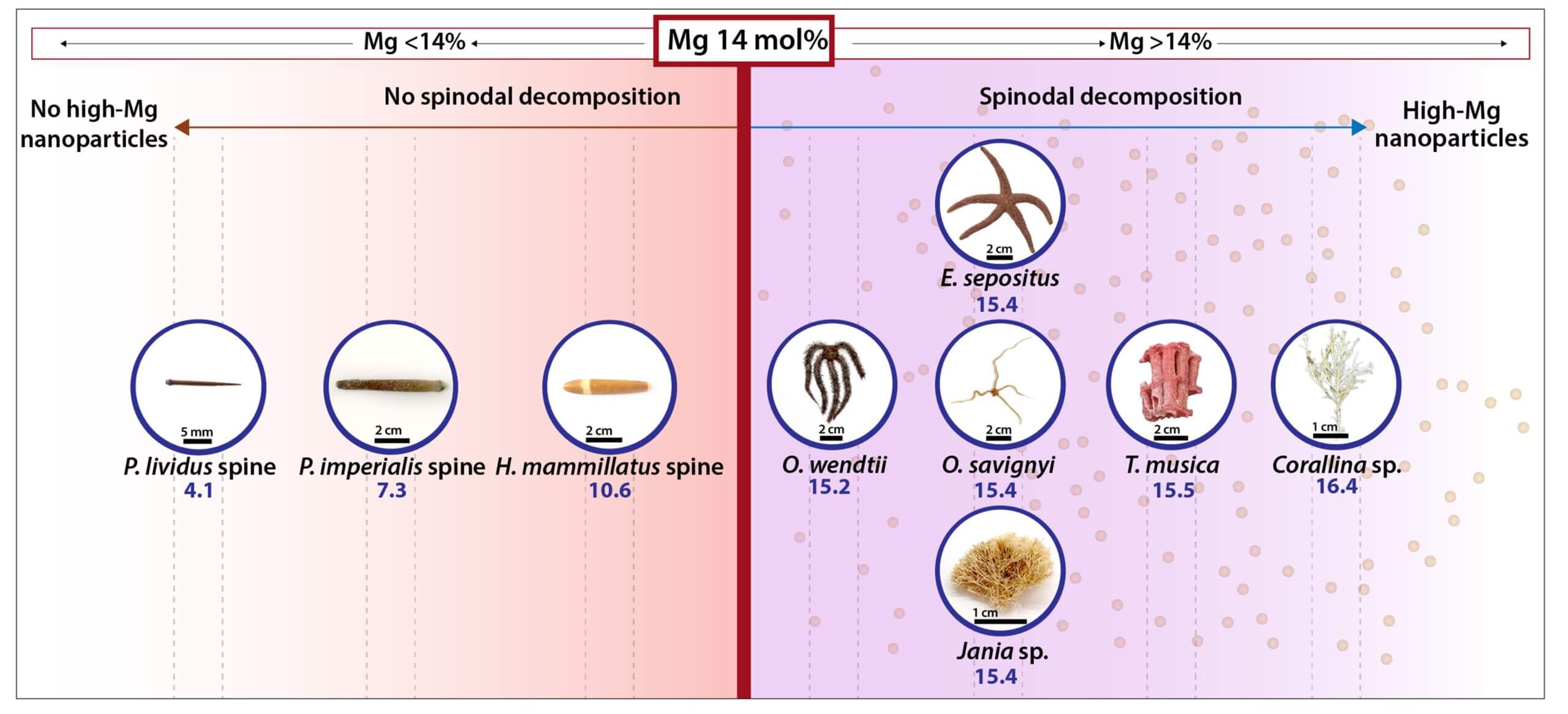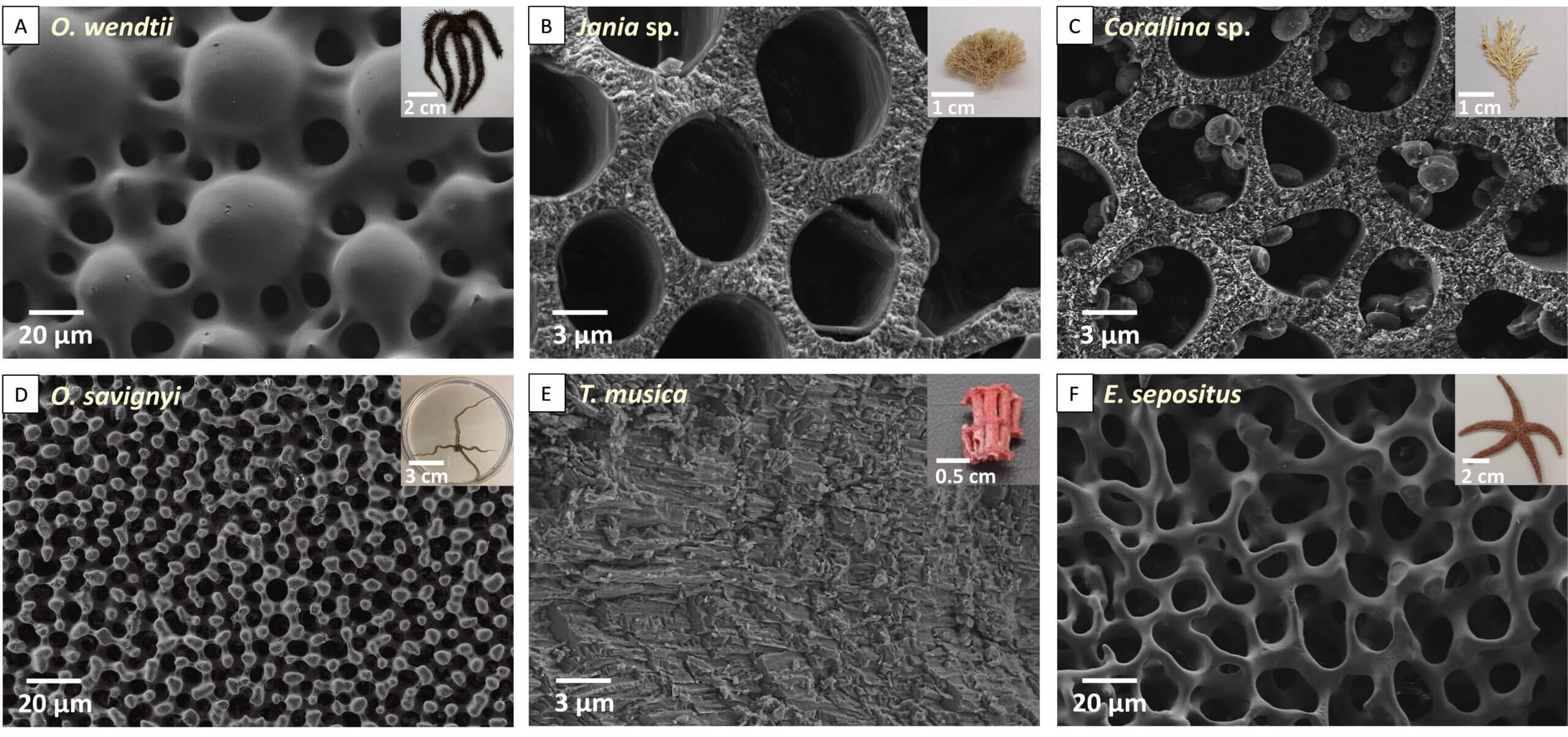An international research group led by Prof. Beaz Pokroy from the Technion deciphered the process of formation of hard and durable materials in the bodies of marine organisms

How do marine organisms produce hard tissues such as armor and optical lenses from the materials available to them and in the hostile conditions that prevail beneath the waves? This is what a study by an international group in transportation deals with Prof. Beaz Pokroy and PhD student Nofer Bianko-Stein from the Faculty of Materials Science and Engineering. The research was conducted with Dr. Catherine Dejoy from ESRF - the European Synchrotron in Grenoble, France.
In the study, recently published in PNAS, the scientists focused on the involvement of magnesium-containing calcite in the aforementioned processes. Magnesium is a strong and light metallic element that plays many roles in the living world, including in the human body. Calcite, and in Hebrew calcium carbonate, is a very common mineral that makes up about 4% of the mass of the Earth's crust. This substance is an essential component ofBiomineralization, that is, in the process in which organisms produce, from the materials available to them, different structures - pearls, bones, armor and so on.
"Biomineralization processes," explains Prof. Pokroy, "produce structures that are superior in many aspects, such as strength and fracture resistance, to artificial products of engineering processes. Therefore, there is no doubt that we have a lot to learn from these processes that have developed over billions of years of evolution, and that our findings may lead to the improvement of engineering processes in a variety of fields."
In the process of biomineralization, the organism uses different strategies to produce strong structures such as an exoskeleton. The Technion and ESRF scientists show in their article that one of the common strategies in this context is Precipitation of magnesium-rich nanoscale calcite particles in a low magnesium substrate. According to Prof. Pokroy, "We discovered that this phenomenon occurs in a huge variety of creatures, even creatures from different kingdoms in the animal world, and we estimate that it is even wider than we discovered. Therefore, it is reasonable to assume that it is a very conserved (ancient) phenomenon from an evolutionary point of view."

In the current study, the researchers focused on nine different organisms including sea urchins, red algae, starfish, coral and sea urchins. As mentioned, the two main players in the process are magnesium and calcite. The researchers discovered that the sedimentation of the calcite particles in the low-magnesium substrate creates compressive forces in the skeletons that increase their rigidity - this without the need for mechanical compression used in the production of similar materials in artificial engineering processes.
in the heat of the sea The unique crystallization process takes place in the lenses scattered on his arms - a kind of primitive eyes but effective for his needs. These lenses, similar in their properties to tempered glass, focus the sunlight on nerve centers that transmit the information to the rest of the body through the nervous system. In contrast to the tempered glass that man produces at high heat and under pressure, the Nachshon lenses are produced at the given water temperature and without external mechanical pressure other than the water pressure. An important step in this process is the transition of the calcite from an amorphous (disordered) phase to the ordered crystalline phase.
The red algae that the international team researched are algae that are common in shallow waters, where they are subject to external pressures from sea waves and therefore must be resistant to tearing and breaking. That's why their cells are coated with those strong nanometer crystals of magnesium-calcite. These crystals create hollow microstructures that increase their strength and durability.
Although the sea urchin and the red algae are very different creatures, they exhibit common structural aspects including the crystallization of strong structures in the process of deposition of magnesium-rich nanometer crystals in a substrate characterized by low magnesium levels.
The researchers discovered that this crystallization process improves both the material's hardness and fracture resistance. Furthermore, they show in the article that even a slight reduction in the proportion of magnesium in the substrate Multiplier the hardness of the material by about 100%.
The research was supported by an ERC grant and was conducted in collaboration with the Grenoble Synchrotron in France and Argonne National Laboratory in Illinois.
for the article in the journal PNAS
More of the topic in Hayadan:
- The digging technologies of the sea urchins will serve as inspiration for the design of digging machines
- Technion researchers have developed a process that allows magnesium ions to be added to desalinated water at a low cost
- Magnesium - an important element for improving memory
- Nature: A researcher from Bar-Ilan University has developed "green" rechargeable magnesium batteries
- New study: drinking salted water may increase the risk of death from heart disease * the reason is the Treasury's refusal to add magnesium

One response
Doubling at 100% does nothing.